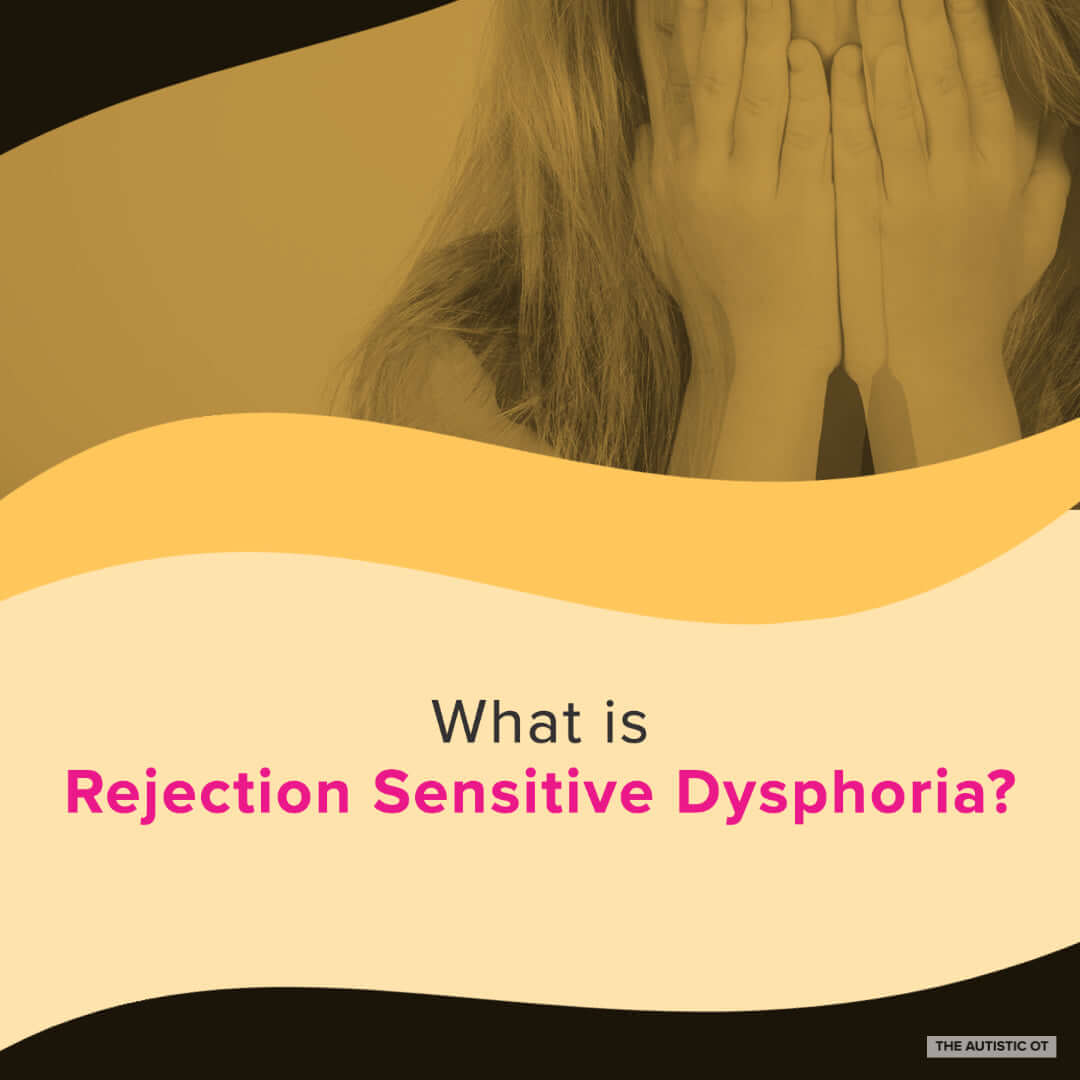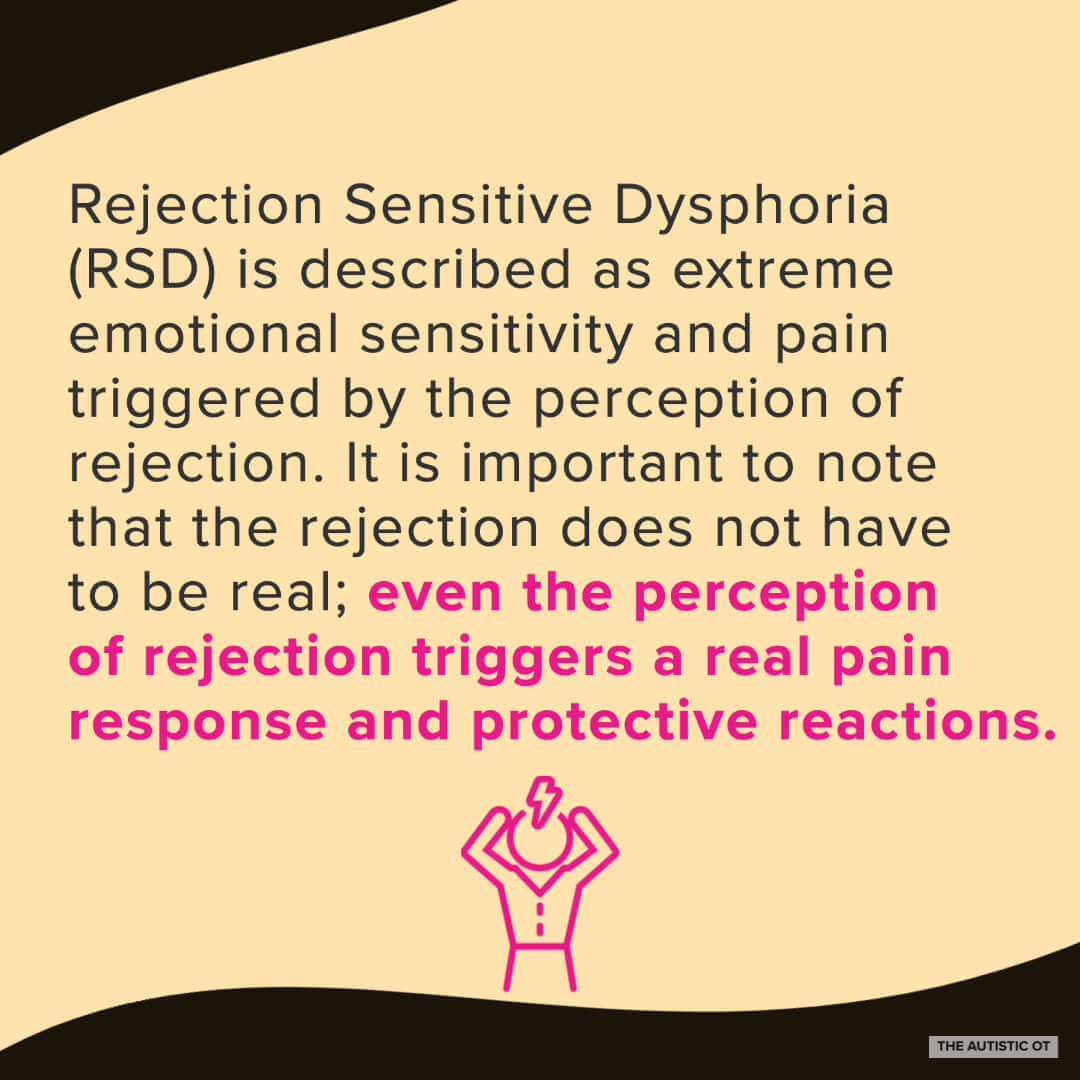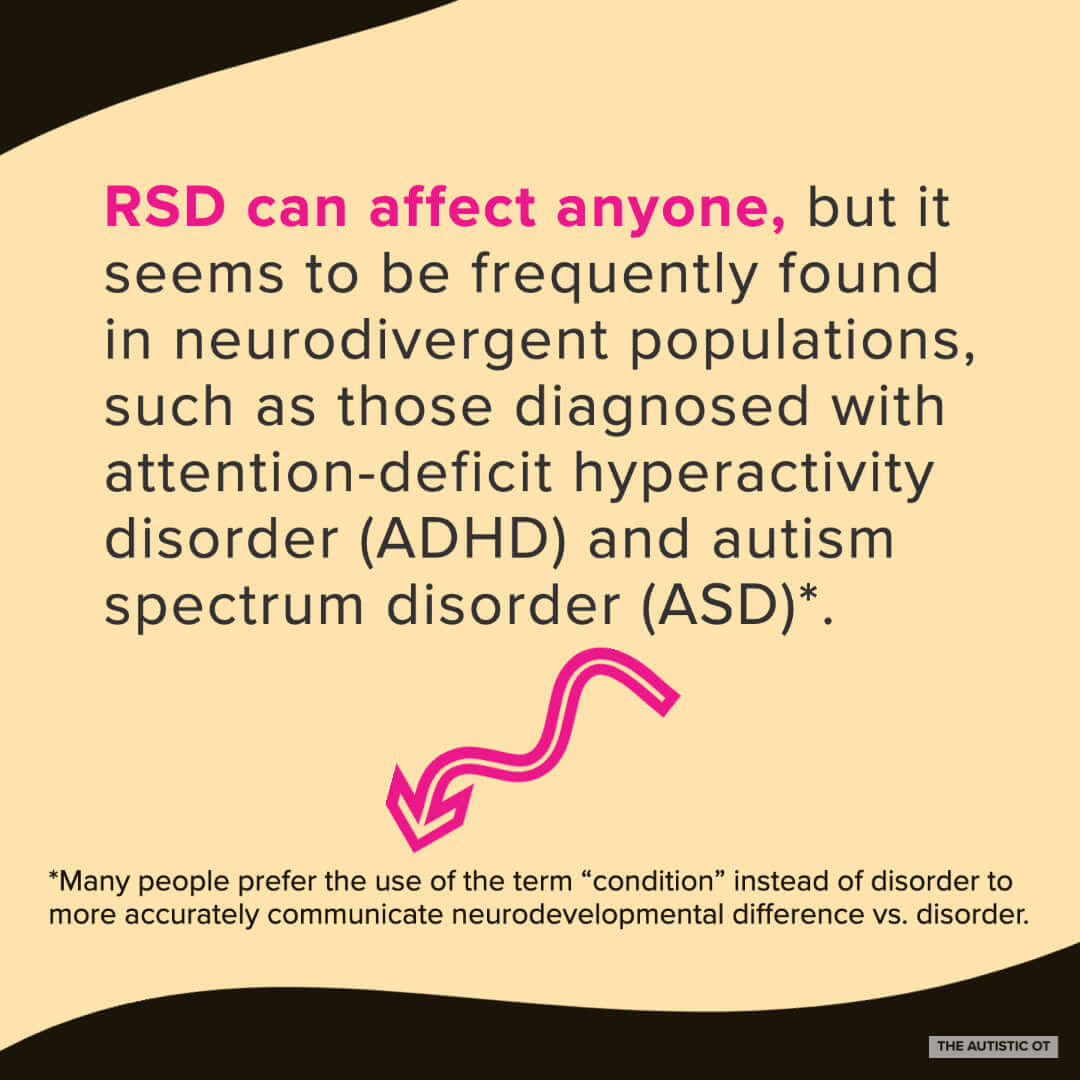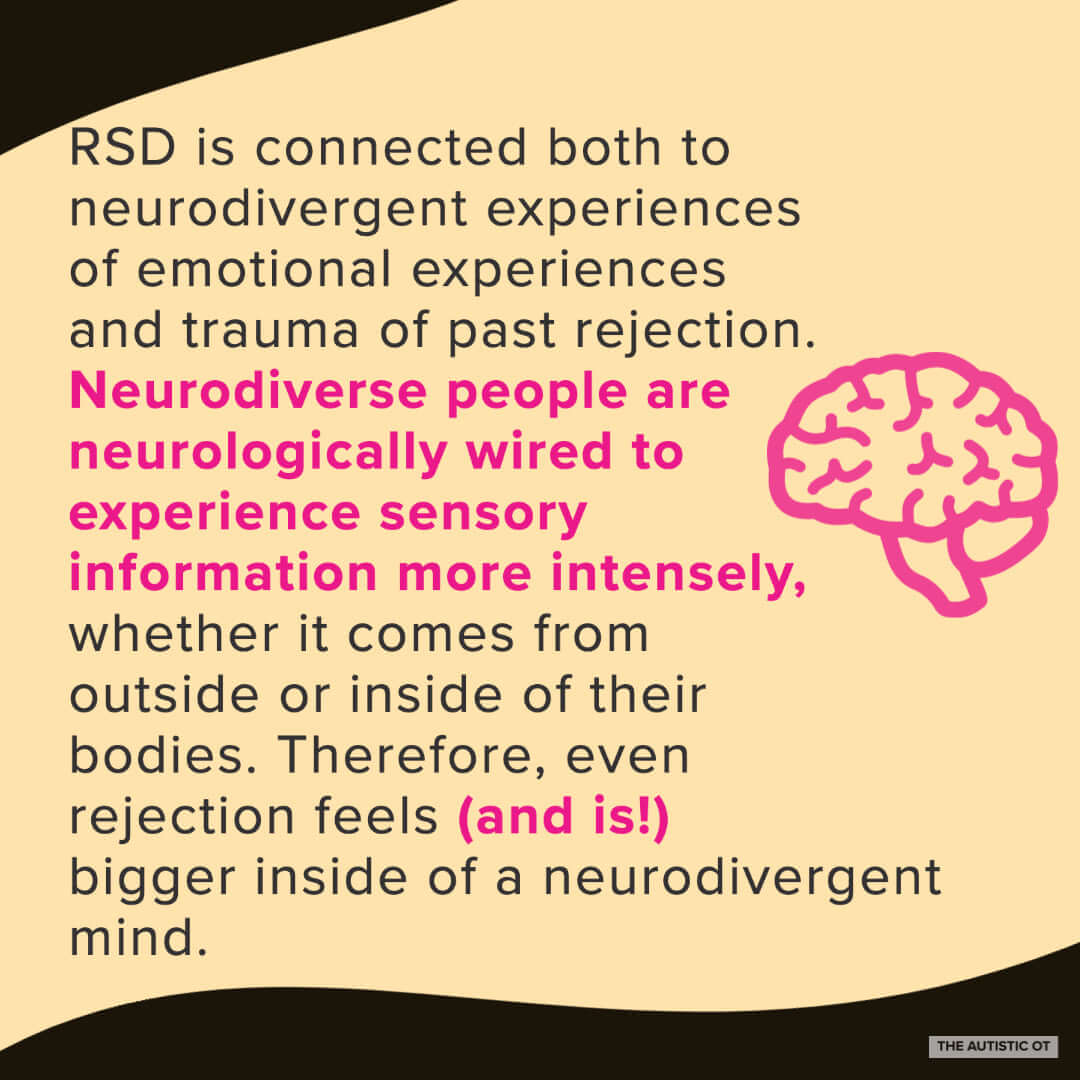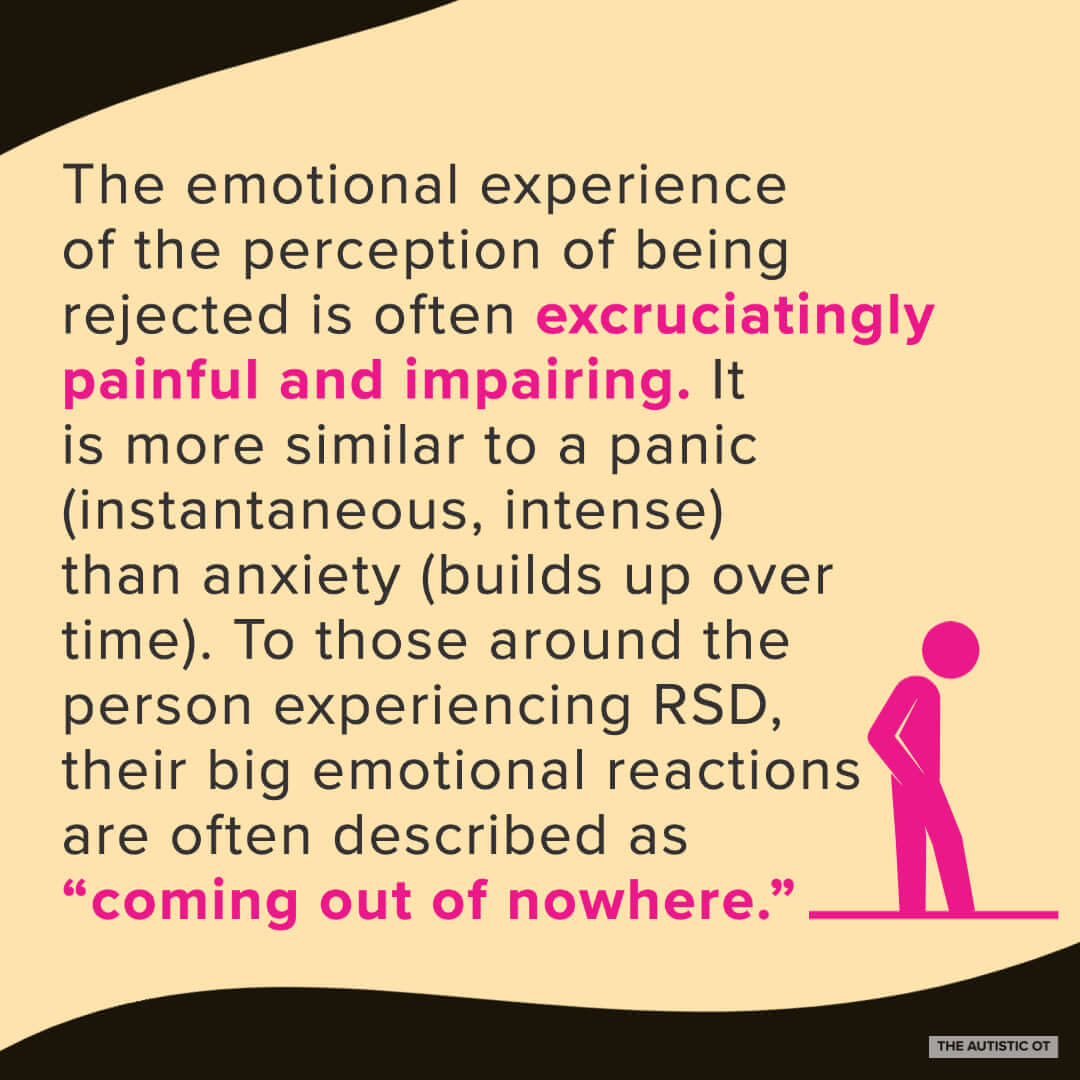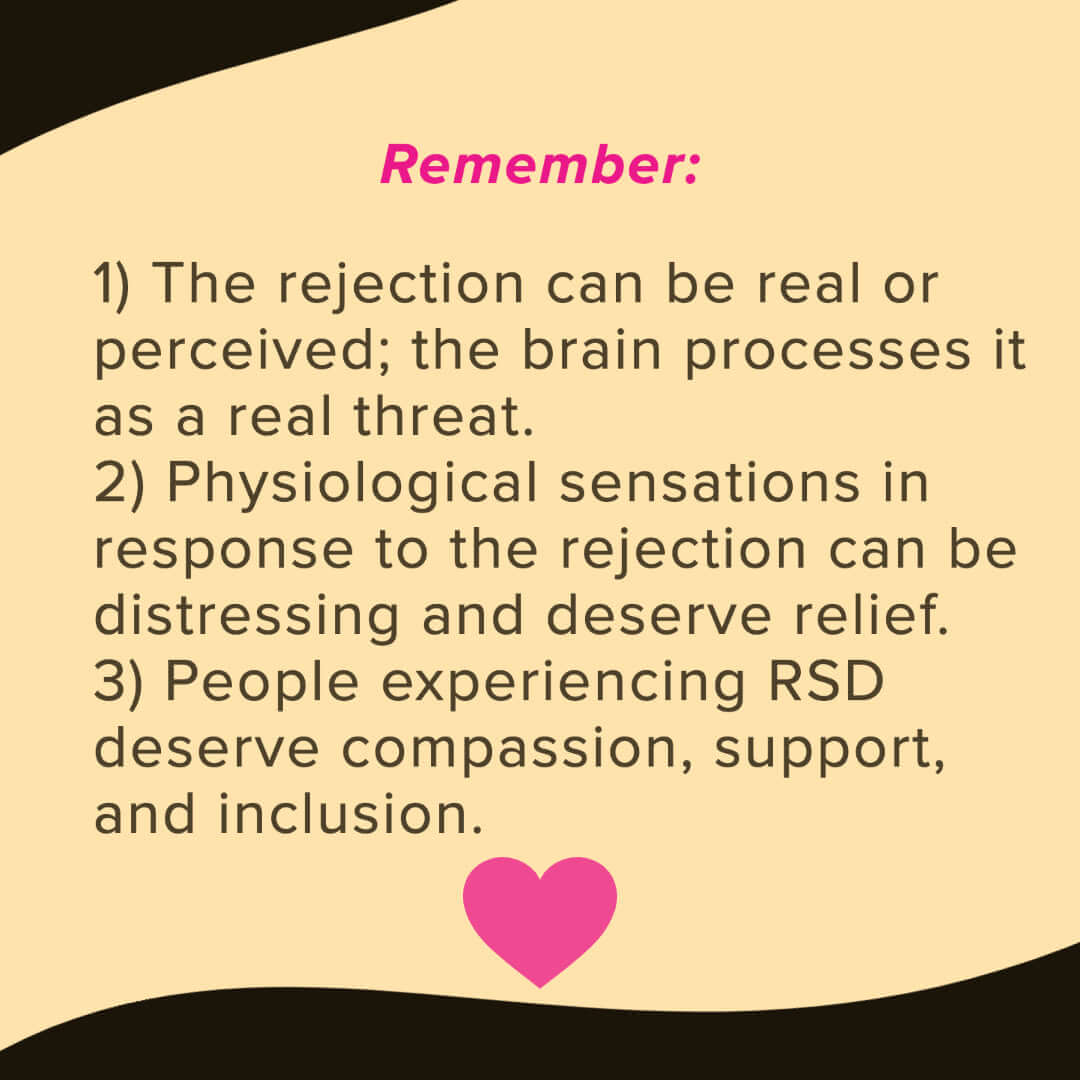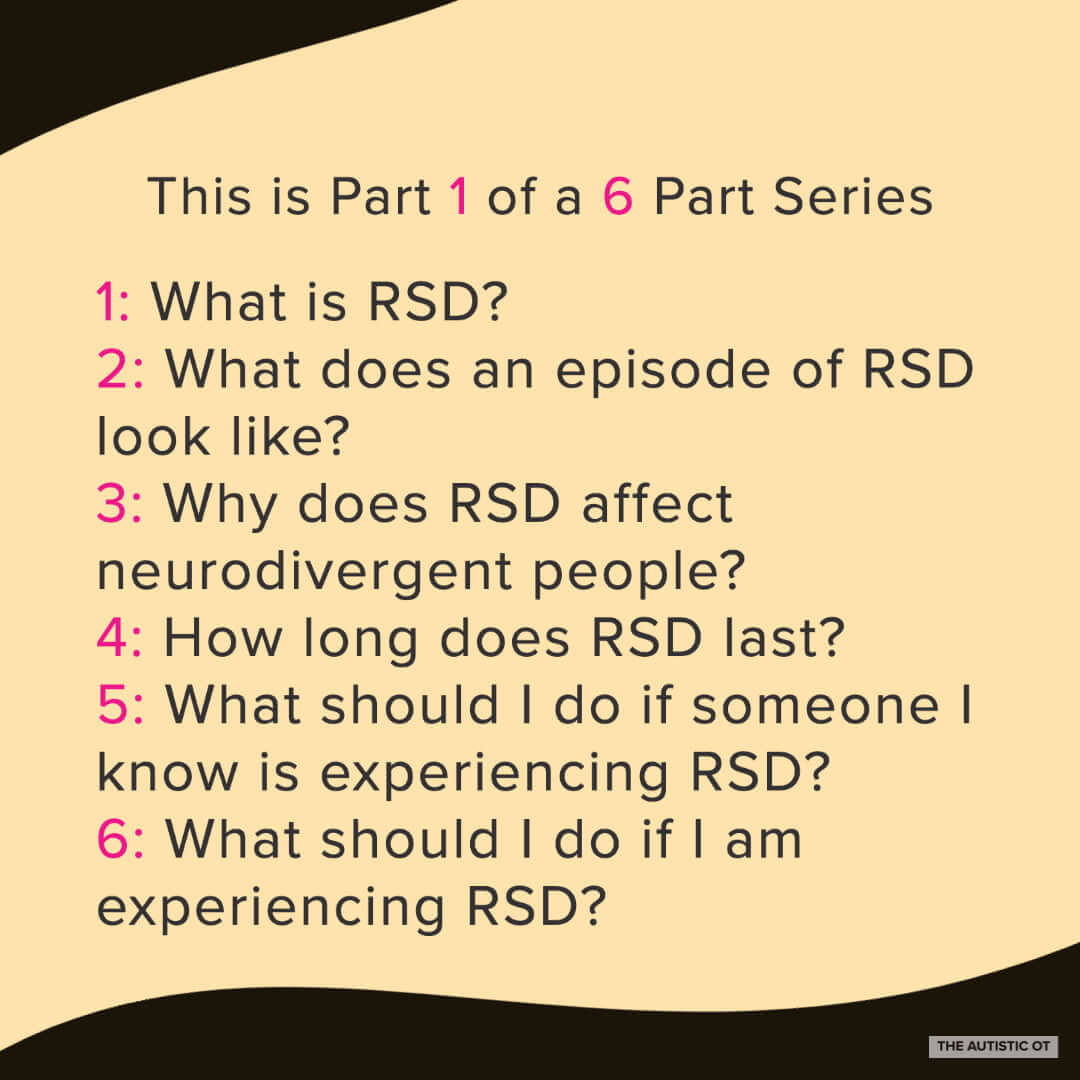Let’s discuss Rejection Sensitive Dysphoria (RSD). I now understand RSD to be similar to/a form of Obsessive-Compulsive Disorder; this resonates with my experience.
I experience(d) RSD acutely to the point that I was frozen, dissociated, and in a constant cycle of meltdown-shutdown. I have been working intently to heal my dysphoria through coregulation, self-regulation with sensory supports, and medication (guanfacine).
I hope this is useful to help dispel the stigma, create equity in access, and radical inclusion of people with RSD.
References
- New Insights into Rejection Sensitive Dysphoria
- Females with ADHD: An expert consensus statement taking a lifespan approach providing guidance for the identification and treatment of attention-deficit/ hyperactivity disorder in girls and women*
- Understand and address complexities of rejection sensitive dysphoria in students with ADHD*
- Rejection Sensitive Dysphoria: Causes and Treatment
- Rejection sensitivity and disruption of attention by social threat cues*
- Justice and rejection sensitivity in children and adolescents with ADHD symptoms.*
- Rejection sensitivity, interpersonal rejection, and attention for emotional facial expressions*
- What is Different about Eating Disorders for Those with Autistic Spectrum Condition*
- Trauma-Informed Care in Behavioral Health Services.
*Peer-reviewed
